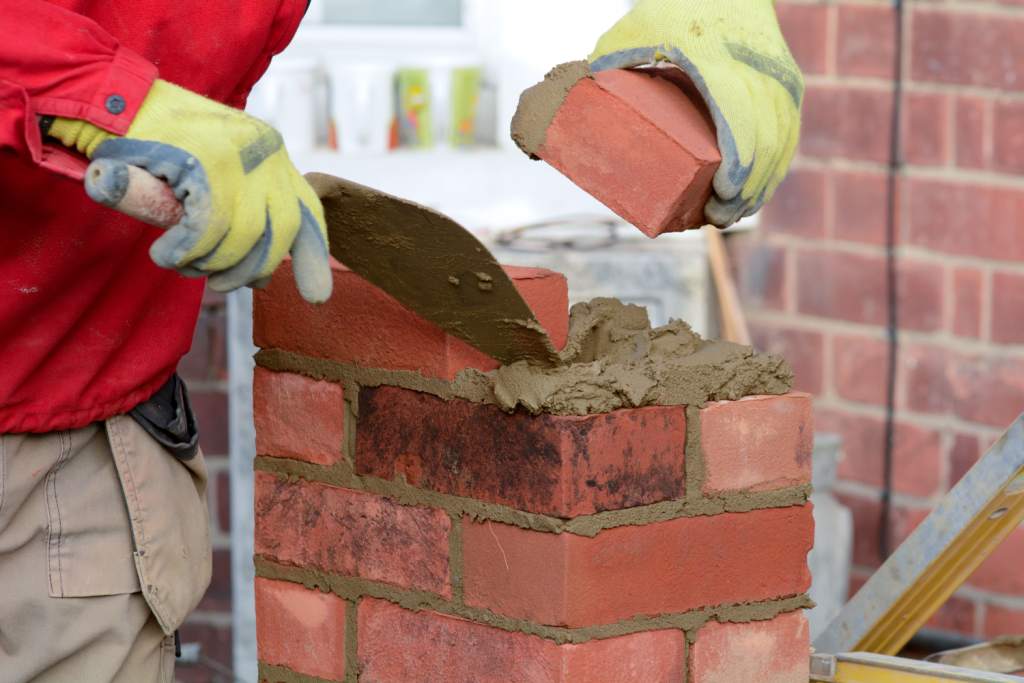Stacking bricks is a fundamental skill in construction and masonry work. Properly stacked bricks form sturdy and stable walls, foundations, and structures. Whether you possess the skills of a seasoned bricklayer or are a passionate DIY enthusiast, the mastery of stacking bricks holds utmost significance for any construction endeavor. We will guide you through the sequential process of stacking bricks, empowering you to construct a structured, durable, and aesthetically pleasing wall.
Prepare the Work Area:
Before you start stacking bricks, ensure you have a clean and level work area. Lay out all the necessary tools, including bricks, mortar, trowel, spirit level, and a jointer.
Mix the Mortar:
If you plan to use mortar as the bonding agent for the bricks, make sure to prepare the mortar mixture following the manufacturer’s instructions. The mortar should have a consistent and workable texture, ensuring a strong bond between the bricks.
Start with a Solid Foundation:
For a stable brick wall, you need a solid foundation. Dig a trench slightly wider than the planned wall and fill it with compacted gravel or crushed stone. Ensure the foundation is level and provide a slight slope away from the structure for proper drainage.
Lay the First Course:
Begin by laying a mortar bed along the foundation to secure the first row of bricks. Use the trowel to spread mortar evenly on the foundation. Gently press the first brick into the mortar, making sure it aligns with the layout lines and is level both horizontally and vertically.
Maintain Consistent Mortar Joints:
As you stack bricks, keep the mortar joints consistent. A standard mortar joint is about 3/8 to 1/2 inch thick. Use a jointer or the edge of the trowel to shape the mortar joints neatly and uniformly.
Use a Spirit Level:
Frequently check the level of the bricks as you stack them, especially at the corners and ends of the wall. Adjust the positioning of the bricks and add or remove mortar as needed to maintain a level surface.
Create Bonding Patterns:
To enhance the strength and stability of the wall, use different bonding patterns. Common patterns include running bond (staggered rows), English bond (alternating courses of headers and stretchers), and Flemish bond (alternating headers and stretchers within the same course).
Cut Bricks When Necessary:
Inevitably, you’ll encounter areas where full bricks won’t fit. Use a brick hammer and chisel or a power saw with a masonry blade to cut bricks to the desired size. Always wear appropriate safety gear when cutting bricks.
Install Brick Ties:
If you are constructing a brick veneer or attaching bricks to an existing structure, install brick ties to secure the wall to the framework. Brick ties should be evenly spaced and securely anchored to the structural elements.
Check Plumpness:
Aside from checking for levelness, it’s essential to ensure the wall is plumb (vertically straight). Use a spirit level to verify that the wall is not leaning or sloping.
Clean Off Excess Mortar:
Throughout the bricklaying process, remove any excess mortar that may spill over the bricks’ edges. This will maintain a tidy appearance and prevent hardened mortar from interfering with subsequent courses.
Allow Time for Curing:
Once the brick wall is complete, allow the mortar to cure for the recommended time. Curing strengthens the bond between the bricks and ensures the wall’s durability and stability.
Pointing the Joints:
After the mortar has fully cured, you can apply a finishing touch by pointing the joints. Pointing involves filling the mortar joints to create a smooth and visually appealing finish.
Maintain Cleanliness:
Throughout the stacking process, keep the work area clean and organized. Dispose of any unused or damaged bricks properly and maintain a clutter-free environment.
Seek Professional Guidance:
If you are a novice or working on a complex project, don’t hesitate to seek guidance from experienced bricklayers or masonry professionals. Their expertise and tips can significantly improve the quality of your brickwork.
In conclusion
Stacking bricks is a skill that improves with practice and patience. By following this step-by-step guide, you can achieve well-stacked bricks, resulting in sturdy and visually pleasing structures. Whether you’re building a small garden wall or an entire house, proper brick stacking is the foundation of a successful construction project. Remember to prioritize safety and precision while honing your bricklaying abilities.


